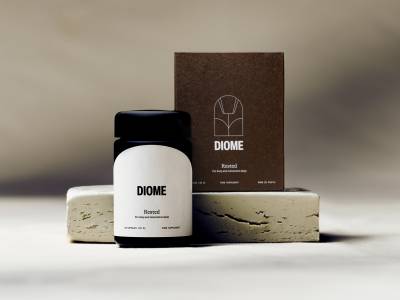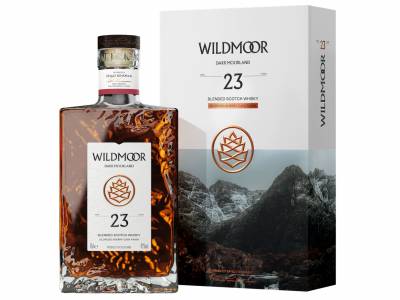It’s natural to expect media interest in the launch of the British Olympic team’s kit. But if the adidas range had not been designed by Stella McCartney, would it have attracted such extensive media coverage? And would customers have been queuing outside H&M’s flagship branches overnight for a new collection if Marni had not been at the helm? These are the latest high-profile examples of a growing phenomenon—the designer/brand tie-up. It started with the high street bringing in top-end names, but is now also a tool in the luxury market, as traditional brands upgrade by working with designers, or add to their product offer by tying in with a hot name from another discipline.
Luxury collaborations: The case for partnering brands
28th December 2012
From high-end to high street, Avril Groom discovers that joining forces is increasingly lucrative for designers and brands.
The idea is that a well-known designer and a famous brand will be even stronger if linked in a capsule collection. This trend is not new. British high-street department store Debenhams kicked it all off with some Philip Treacy hats in 1993 and collections from Jasper Conran in 1996; now its portfolio includes a dozen designers. The advantages to both sides are obvious—a raised profile for young designers and fashion credibility for a mid-market store.
In 2004, Swedish chain H&M raised the game by working with top-end established designers happy to broaden their customer base to aspiring, if less affluent, markets. As these are strictly limited, one-off hits that often sell out in hours, the concept benefits from a “mass luxury” cachet. Names have included Karl Lagerfeld, Comme des Garçons, Roberto Cavalli, Jimmy Choo, Lanvin, Versace and, most recently, Marni, and their success has encouraged others.
Topshop has long worked with young British designers on capsule collections that help to promote these names through the brand’s growing international network and website. But its recent one-off collaboration with hot young print designer Mary Katrantzou was its most successful and fastest-selling—though the number of people currently wearing both the very distinctive Marni and Katrantzou prints dispels any notion of the “exclusivity” of these ranges.
This does not put off designers creating similar links. Italian knitwear innovators Missoni recently paired with American chain store Target; red carpet favourite Alberta Ferretti has collaborated with US store Macy’s in the latest of their Impulse Capsule collections; and Diane von Furstenberg has brought her distinctive, print-based ethos to Gap childrenswear. But success is not guaranteed.
Uniqlo recently ended its +J range with Jil Sander; her minimalist style looked a good fit for the Japanese quality basics firm, yet sales are understood to have been disappointing. These links involve designers working in a familiar field, albeit at a different level. But Coca-Cola or champagne bottles, both designed by Jean Paul Gaultier, and formerly Karl Lagerfeld, surely stretch the credulity, however elegant the design. Not necessarily, says Sally Bain, retail consultant at The Chambers: “Gaultier is known for curvaceous, womanly shapes in his perfume bottles and his clothing for Madonna, so why not a shapely bottle? That link can work.” Designer names carry global clout.
When McCartney started working with adidas in 2004 she was not the fashion power she is today, yet her laid-back, sporty/glamorous style was a good choice and her collections very successful. The combination of adidas’ wide-ranging technical expertise and her talent and globally recognised brand made the collaboration a natural choice for the Olympic project. Active sportswear has developed a gloss through designer links. Puma works with innovative designers such as the late Alexander McQueen and, currently, Hussein Chalayan, and has created Jamaica’s Olympic kit with Bob Marley’s designer daughter Cedella. Some of the world’s biggest fashion names have Olympic ranges—Ralph Lauren for the US and Giorgio Armani for Italy.
Fitting the designer to the brand is the most crucial aspect if the collaboration is to have any validity for the consumer. As a response to increasing global demand for luxury and the resulting growth in brands interested in designer collaborations, analysts Verdict Research have compiled a report that concludes the choice of partner and the presentation of the product are two of the most important factors in such links. As Bains says, “it needs to be a case of one plus one equals three—the fit is so good that the resulting product enhances both parties.” This aspect is even more important with the “double luxury” collaborations now proliferating, though here firms have the advantage of time—these are usually long-term links which can take years to create, allowing both sides to know and work together.
All luxury brands mention the importance of synergy with their design partners. Renaud Paul-Dauphin, CEO of shoemaker John Lobb, who has made a range of men’s driving and leisure shoes for Aston Martin, speaks for many. “I didn’t know if this project would work until the car and shoe designers sat down together, then I realised they spoke exactly the same language and had the same concerns for craft and technique; the same vision and values. Car and shoe are both about motion and British heritage, and from that the ideas flowed, though it took two years to develop.” It was “coincidence” that the shoe was ready for the opening of Aston Martin’s new W-One concept showroom in London, which houses both cars and collaborative products.
Watch brand Jaeger-LeCoultre has collaborated with Aston Martin since 2004. “Our CEOs originally met just to learn about each other,” says director of UK market and global strategy, Zahra Kassim-Lakha. “They found they had the same values of perfectionism, striving, sense of detail—they are now good friends. When they got the designers together they found Jaeger-LeCoultre had made dashboard instruments for early Aston Martins, which was a design starting point. Eight months later we had the first AMVOX model—that was initially about design, but then engineers from both companies started to innovate, with the vertical trigger chronograph and technical fibres for straps. Now they are looking at ideas for years ahead.” Such links are not risk free. “We take a chance with products promoted partly through a non-shoe specialist but I have full confidence in them,” says Paul-Dauphin, while Kassim-Lakha believes “it works best where a car dealer is also interested in watches, which often happens. We are concentrating worldwide on places with a good dealer and retailer in proximity who can work together”.
No such worries for jewellery designer John Calleija, who has also partnered with the luxury car marque. “As an Aston Martin owner, I met their CEO and our working relationship developed naturally over six years,” he says. “Being inspired by the art, purity and passion of this brand has led me to this collection, which includes a stone-cut based very subtly on the Aston Martin radiator grille. It is in our stores and their new concept store, and can be made bespoke. It is wonderful to work with a company which never compromises on quality.”
“It allows us to extend beyond our traditional associations and tap into each other’s customer pool”
Indeed, the heady world of watches, jewellery and luxury cars is a fruitful one. Breitling’s link with Bentley is long established and has many advantages, according to the carmaker’s marketing vice-president Ben Balmer. “It allows us to extend beyond our traditional aviation association into the world of super-luxury cars to express our expertise, along with tapping into each other’s customer pool,” he says. “Luxury watches and cars appeal to the same brain area—attraction to the sexiest, best-looking body equipped with the most powerful, reliable engine—so we share information about the lifestyles of similar clients.” Boodles have created a jewellery collection for performance car-maker McLaren, to go with their new road car, the MP4 12C. “They are a cutting-edge British brand with a Grand Prix profile, so attractive for us as an all-British firm, though it was a long, two-year development process,” says Boodles’ MD Michael Wainwright. “The six-piece range of rings and cufflinks in white gold with diamonds is based subtly on the wishbone feature used in the cars. We’re very pleased with it and working on some larger diamond ladies’ pieces.” Theo Fennell, meanwhile, takes the jewellery link back into sport, with an edition of just five diamond necklaces celebrating the Epsom Derby and the Diamond Jubilee, with 60 diamonds, a horseshoe design and a piece of wood from the winners’ enclosure. Even luxury fashion brands are now linking with outside designers.
Quirky cashmere brand Brora collaborated on a sell-out collection with individualist designer Louise Gray. “We might seem unlikely bedfellows but we both have a Scottish heritage and an uncommon love of bright colours,” says Brora founder Victoria Stapleton. “Louise pushed the boundaries of production to new levels and I realised the label is ready for adventure”. Louise agrees. “It’s a wonderful Scottish brand, and I relished going through their archives and bringing my colours and inside-out textures to their classic shapes,” she says. Similarly, Barbour works with British designer Alice Temperley on its high fashion Gold Label range that, photographed over Temperley’s delicate evening gowns, could have stepped out of a period drama yet looks youthful and contemporary. “Customers love the best of both British brands and it has been very successful in raising awareness of Barbour as a premium fashion brand,” says head of womenswear Sarah Lawrenson. And the Cambridge Satchel Company has cleverly asked renowned print designers Basso & Brooke to produce flamboyant designs for their traditional bag shapes. When brands and designers are truly well-matched, such collaborations succeed, and this is a trend set to escalate.





